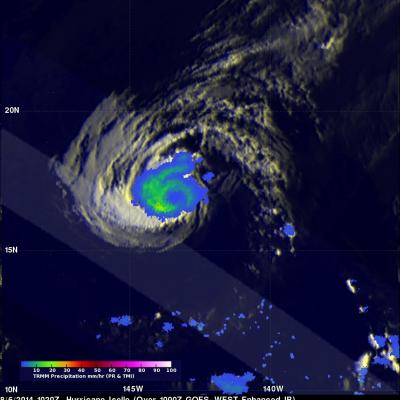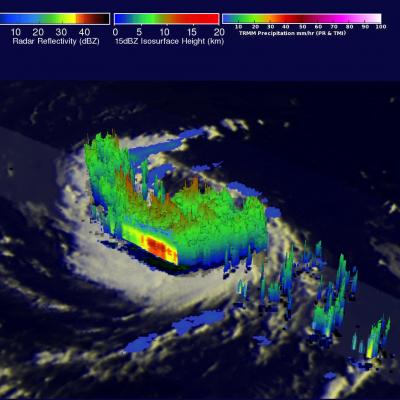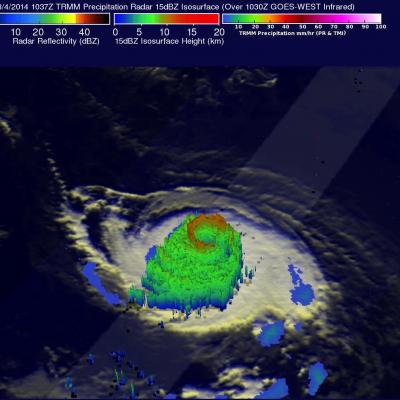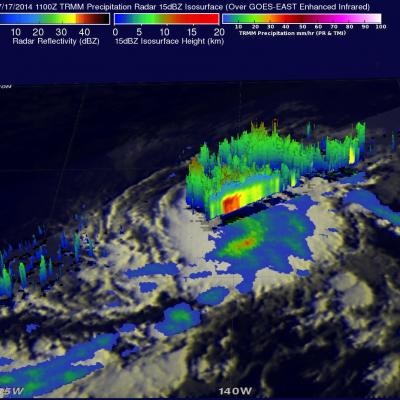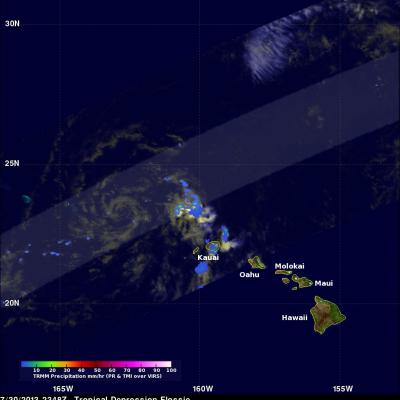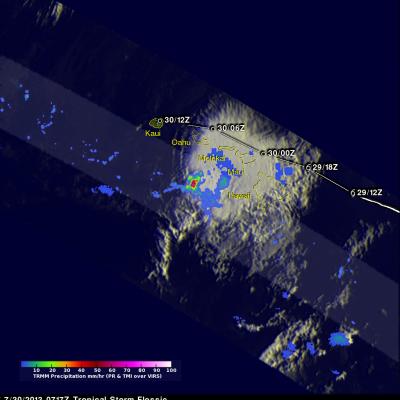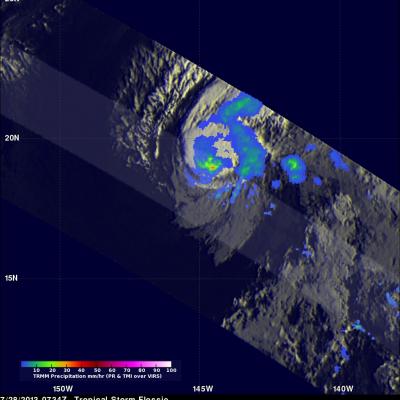TRMM Sees Iselle and Julio Menacing Hawaii
The TRMM satellite saw both weakening hurricane Iselle and category two hurricane Julio in the same orbit as they were moving toward the Hawaiian islands on August 7, 2014 at 0922Z. This image shows data collected by TRMM's Microwave Imager (TMI) instrument with the orbit containing both hurricanes located in the center of the image. Microwave brightness temperatures at 85.5 GHZ and at 37.0 GHZ were combined in the red, green and blue components to construct the image. Recent forecasts of tracks for hurricane Julio and tropical storm Iselle are shown overlaid in white and red respectively.


